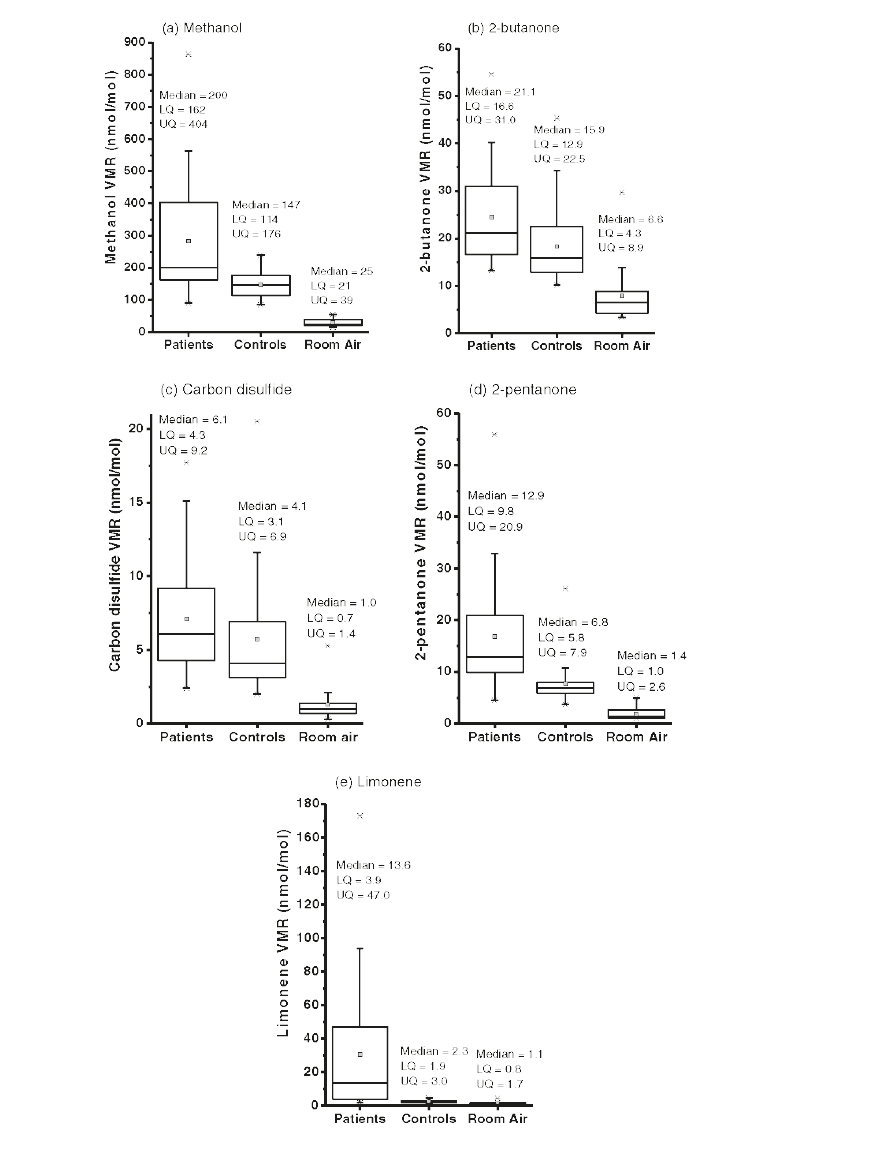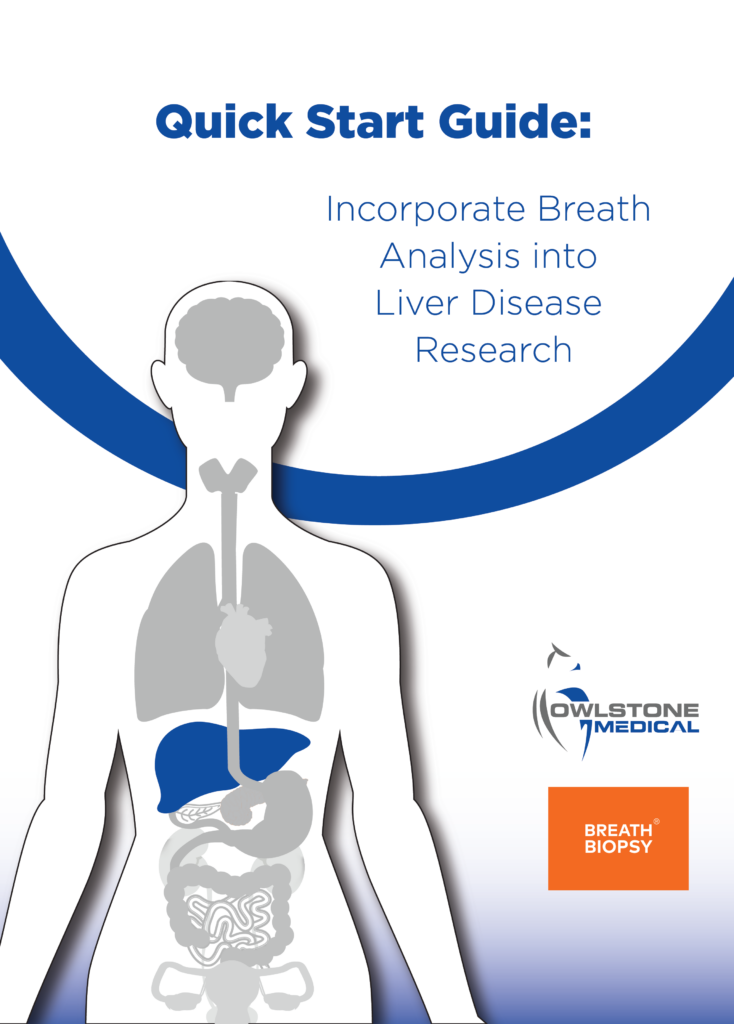Diagnostic Potential of Breath VOCs for Liver Diseases
Comparisons of Pre- and Post-liver Transplant Breath Samples
| Publication information: Fernández del Río et al. Volatile Biomarkers in Breath Associated with Liver Cirrhosis — Comparisons of Pre- and Post-liver Transplant Breath Samples. Elsevier B.V 2015 DOI: 10.1016/j.ebiom.2015.07.027
Disease Area: Liver disease Application: Early detection, progression monitoring Sample medium: Breath Analysis approach: PTR-MS Summary:
|
The prevalence of liver disease globally is on the rise and there is a need for improved early diagnostics to improve clinical outcomes by allowing more people to be treated at a stage where damage to the liver is still reversible. With the eventual goal of developing tests to identify early-stage liver diseases, several studies have investigated breath biomarkers that differentiate the extreme phenotype of advanced liver disease from healthy controls. In this study Fernández del Río et al. aim to determine the viability of non-invasive breath analysis as a means to monitor/diagnose liver disease by analysing volatile organic compounds (VOCs) on breath that are a consequence of metabolic changes in the liver.
The study reports a two-part breath biomarker discovery process in which breath samples from a cohort of patients with advanced liver disease are compared to a healthy control group. Following this, pre-transplant samples from patients were compared against samples from a sub-cohort of patients that had liver transplants. By comparing between patients with controls, and then pre- and post- transplant samples, a set of putative VOCs was identified and intra-individual differences in VOCs were determined.
All samples were analysed with PTR-MS within two hours of collection. VOCs of interest were determined using Man-Whitney U-tests to identify significant differences between patients and controls. A Wilcoxon signed rank test was used to compared between pre- and post- transplant breath samples.
Five VOCs Appear Elevated in Cirrhosis and Fall Following Transplant
Fernández del Río et al. identified seven VOCs that were elevated in the breath of patients compared to the control samples. Following transplant, five of these VOCs showed a statistically significant decrease: Limonene, methanol, 2-pentatone, 2-butanone and carbon disulfide (Figure 1). The team concluded that methanol, 2-pentanone and limonene were the most diagnostically relevant, with limonene demonstrating the greatest significance, showing the largest average decrease in all post-transplant samples, and with the area under receiving operating characteristic curve of 0.91.

Limonene exhibited wash-out behaviour in post-transplant samples, with the abundance of limonene on breath decreased gradually following transplant surgery (Figure 2), whilst the abundance of the other VOCs of interest had already reached a normal range at the time of the first post-transplant measurement. This led Fernández del Río et al. to propose that limonene could be used to assess liver function post-transplant by monitoring this wash-out characteristic. This result also serves to demonstrate a clear relationship between liver function and exhaled limonene within individual patients.

Find out how Breath Biopsy has been used to measure limonene as a marker of cirrhosis in this case study and explore how this has helped us to develop EVOC® Probes as a high sensitivity approach for breath testing.
If you are interested in using breath analysis for liver diseases, or would like to find out more about Breath Biopsy contact our team.
Quick Start Guide: Everything you need to know about how breath analysis can be used in liver disease research
